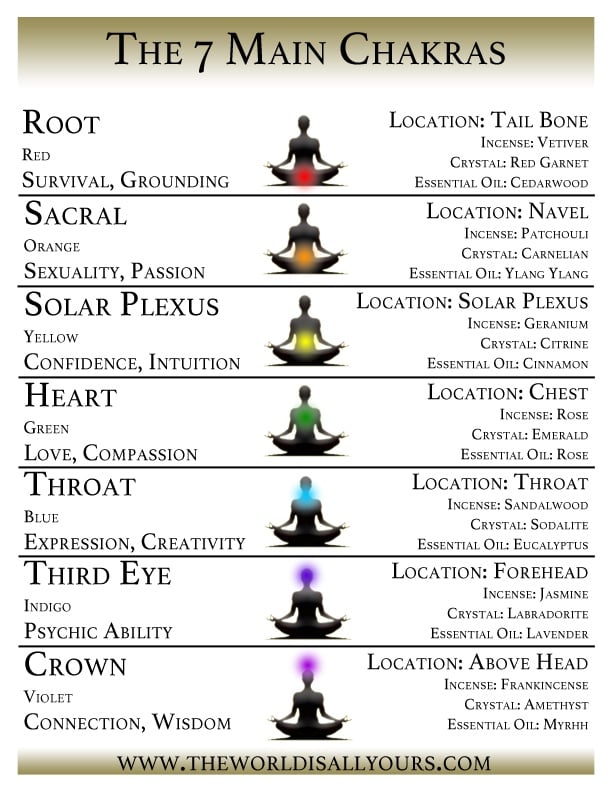Ray is talking about one of the main reasons you may be seeking to meditate: anxiety. About 40 million Americans1 — or 18 percent of the population — suffer from anxiety but very few seek assistance.[1] If you do seek assistance, there’s only one mental health professional for every 1,000 people and there are many societal barriers to help. Meditation is a proven method of self care to help you with your anxiety. Even if you don’t suffer from anxiety, meditation can help you maintain a healthy mind-state, which is essential for quality relationships, bodily health and a productive life.[2]
Meditation techniques to boost mindfulness
Here, you’ll find detailed information on meditation techniques, including the basics of each technique so you can start right away. The purpose of this guide is to help you choose a meditation method. Through whichever meditative path you choose, your ultimate destination is a state of liberation and mindfulness.
1. Basic beginner’s meditation
This is a way to initiate yourself to the practice of meditation without engaging in any of the more difficult techniques. This will acquaint you with the emphasis on breathing, the noting of sensations and the lack of judgement. How to do basic beginner’s meditation:
2. Zazen
Zazen is the Zen Buddhist practice of seated meditation. Some Zen Buddhists contend that Zazen isn’t meditation, yet other Zen practitioners believe Zazen is the meditative practice at the core of Zen.
Zazen involves three intertwined elements that to the Zen Buddhist are a single thing: your posture while seated, your breathing and the state of mind arising from the act of sitting and breathing.
How to do Zazen:
3. Qigong
Qigong is “life energy cultivation.”[4] Qigong is a Chinese Taoist practice that broadly speaking, combines exercises with breathing techniques. For the meditation practice, you’re going to focus your qi, which is your vital energy. How to do Qigong meditation:
4. Mindfulness
Mindfulness has become enormously popular in the West because you can practice it in any setting and it is a stress-reduction technique. Like all meditation practices, mindfulness focuses on mind-state and body simultaneously. How to do mindfulness meditation:
5. Loving-Kindness
Also called Metta meditation, Loving-Kindness stems from Theravada Buddhism.[5] Metta is about directing specific feelings and thoughts. It’s great for anyone who suffers from depression, anger outbursts and negative thoughts. How to do Loving-Kindness meditation:
6. Chakra meditation
In Sanskrit, chakra means “wheel” or “disk”.[6] A chakra is a wheel of energy. There are seven of them and they start at the base of the spine and move up to the crown of the head. Each chakra corresponds with bundles of nerves and major organs. Chakra meditation is about aligning and opening the chakras. Each chakra has a sound (mantra) and a color associated with it. Begin by learning the basics of each chakra:[7]
How to do chakra meditation:
7. Gazing meditation
This yogic meditation is a externally focused. How to do gazing meditation:
8. Third Eye meditation
With this practice, you’ll focus exclusively on the ajna chakra, which is the third eye on your forehead between your eyebrows. How to do Third Eye meditation:
9. Kundalini meditation
Kundalini yoga will release the snake-like energy coiled up at the base of the spine. That energy will rise up through the spine and to the crown. This practice adheres to dieting practices, breathing exercises and specific movements. How to do Kundalini meditation:
10. Nada yoga
Nada Yoga is sound meditation, which helps it fit very well with the growing practice of music therapy. How to do Nada yoga meditation:
11. Self-inquiry
This meditation questions the “I” or what it is you’re speaking of when you say “I do this.” It originates from the Sanskrit atma vichara, to investigate the self. Self-inquiry is about oneness of the body and mind. How to do self-inquiry meditation:
12. Tantra
Unlike the popular conception, Tantra is not necessarily about sex. Vijnanabhairava Tantra prescribes over 100 dharanas or “things to meditate on.”[9] Most of them are advanced meditations that already require you to be familiar with basic meditative practices. Here’s a Tantric meditation that stems from the Tantrika belief that the body is made of divine light. How to do Tantra light meditation:
13. Taoist Emptiness meditation
The Chinese Taoist tradition of Emptiness Meditation emphasizes letting go of thoughts, feelings, and sensations as they arise. How to do Taoist Emptiness meditation:
14. Vipassana
Vipassana is a traditional Buddhist meditation practice from which Western practitioners derived mindfulness. Like mindfulness and other meditations, it starts with the breath. How to do Vipassana meditation:
15. Mantra Meditation
A mantra has no meaning. It is merely a word or symbol you repeat in order to reach a meditative state. Each mantra is a vibration that puts your brain waves in tune with the rising and falling waves of the universe (light waves, sound waves, radio waves, ocean waves). How to do Mantra meditation:
16. Guided Meditation
Guided meditation appeals to the same need that Transcendental Meditation (TM) appeals to: the need for an instructor. However, TM requires you to spend a great deal of money on a guru while guided meditation can be as simple as downloading an app. How to do guided meditation:
17. Body Scan meditation
In this variation on mindfulness, you’ll note what every part of your body is doing. Berkeley University recommends you try this for 20 to 45 minutes per day, 3 to 6 days per week.[10] How to do Body Scan meditation:
Choose what calms you
Meditation helps release you from your tendency to brood and dwell on negative thoughts. It increases your discipline, improves your focus and observation skills, decreases anxiety and helps increase awareness of your body, thoughts and surroundings. Whichever meditation technique you choose, repeated practice will move you closer to liberation, mindfulness and enlightenment. Featured photo credit: Twenty20 via twenty20.com
